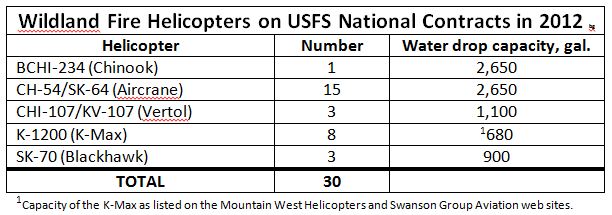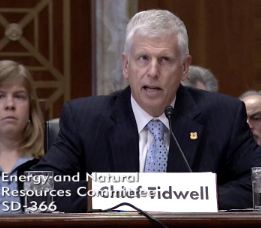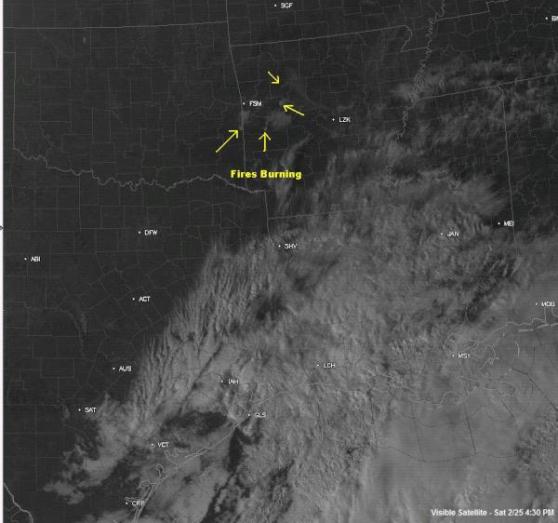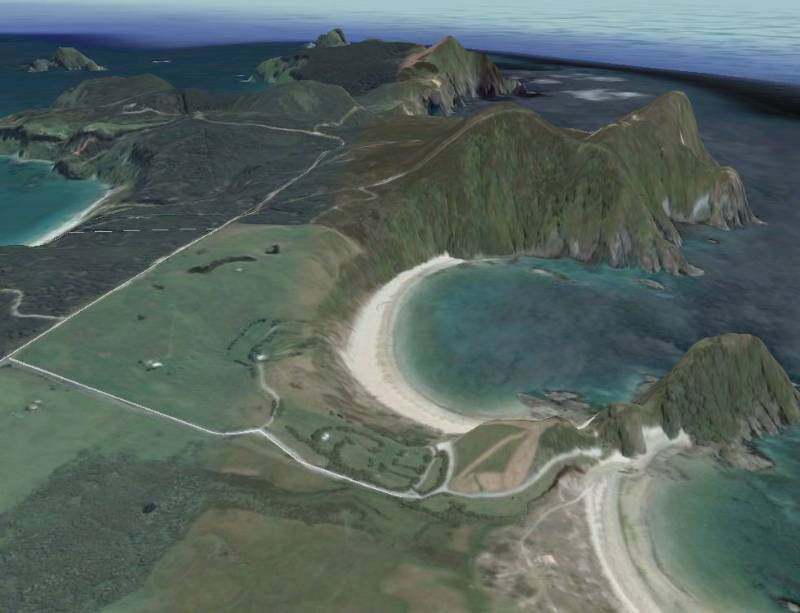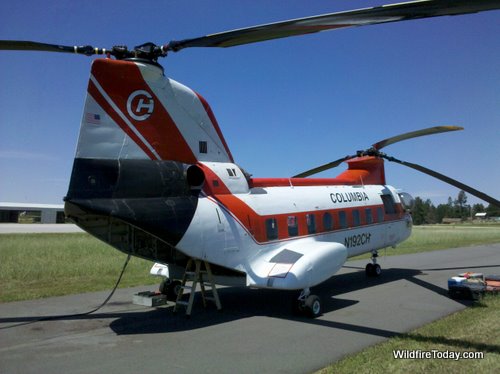
When we reported on some of the statements that the Chief of the U.S. Forest Service made on Tuesday when he testified before a congressional committee, some of the information about the availability of helicopters raised my curiosity. Chief Tom Tidwell said there will be 30 large Type 1 helicopters on national contracts this year compared to 34 last year, but not all of those last year were Type 1, so this year, according to Chief Tidwell, there will be a net increase in the number of gallons of water that can be carried.
We confirmed that yes, there will be 30 helicopters on national U.S. Forest Service contracts in 2012. The Request for Proposal that the agency issued was for 34 helicopters, but the USFS decided to eliminate four — at Alturas, CA; Oakridge, OR; Orland, CA; and Porterville, CA.
It is debatable whether all 30 of them are Type 1 helicopters, as Chief Tidwell stated. Eight of the 30 are K-1200 (K-Max) ships that have a capacity of 680 gallons of water in an external load, according to the capabilities listed on two of the K-Max contractors’ web sites. The standard for a Type 1 helicopter is for it to be able to carry at least 700 gallons. If someone is listing the K-Max as a Type 1, it is very close to the minimum number of gallons, while as you can see in the chart below, the other helicopters on contract this year can carry from 900 to 2,650 gallons.
The K-Max has by far the cheapest hourly rate of all of the helicopters on contract this year– about 1/6 of the largest Type 1s. And it has by far the smallest capacity. However, the USFS Chief feels free to say all of the helicopters on national contract are Type 1.
One change that was noted in the new contract is that the Boeing Vertol 107 that was at Custer, South Dakota, is being replaced with a smaller K-Max, reducing the number of gallons carried by 38 percent. A cynic might think that in this case the USFS is strictly saving money, with little regard to firefighting capability.
The National Interagency Aviation Council study that was approved by the National Wildfire Coordinating Group in July, 2008, recommended that there be on contract in 2012, 34 Type 1 helicopters, 47 Type 2 helicopters, and 100 Type 3 helicopters. The same study recommended that there be by this year 23 large air tankers plus 3 water scooper air tankers on contract, for a total of 26, and by 2018 a total of 35 (32 plus 3).
Since the number of large air tankers on USFS national exclusive use contracts has decreased by 75% since 2002, down to 11 today, it is difficult to understand the logic of decreasing the number of helicopters. A rational person would attempt to fill the void with more, rather than less. A rational person would also be alarmed that the unable to fill rate for air tanker orders in 2011, a slow fire season in most of the country, was 30 percent.
This state of the wildfire aviation program can be attributed to management that is characterized as lethargic, apathetic, indifferent, timid, passive, indecisive, and afflicted with the Peter Principle and analysis paralysis, as evidenced by the five wildfire aviation studies over the last 16 years that are sitting on shelves, largely ignored. This sorry state of the program has existed for the last 10 years. The citizens deserve better from the stewards of the land.


